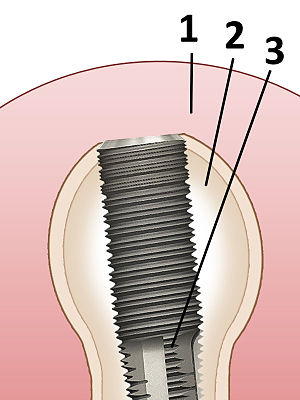 Image via Wikipedia
Image via WikipediaGood oral hygiene is important for maintaining one's overall health. If you believe this and you should, then there are 4 essential guidelines of preventative care to maintaining good oral health, all of which are endorsed by the American Dental Association:
1. Floss regularly and floss first- It is recommended that individuals floss on a regular basis after meals and before brushing their teeth. The reason to floss first is to dislodge any food particles trapped in between your teeth, which can be disposed of while brushing. The proper way to floss is to push the floss gently between your teeth to the gum to loosen debris your toothbrush cannot reach. Initially, you may experience some light bleeding but this should disappear once your gums get used to the flossing process.
2. Brushing your teeth- If you don’t have an electric toothbrush, good brushing by hand should take a minimum of 2 minutes and should involve brushing in a circular motion, which the electric toothbrush does for you. You work your way from one side of the mouth to the other, keeping in mind to pay attention to certain neglected areas such as the very back teeth and your tongue. Dentists recommend using soft bristle brushes and toothpaste that contain fluoride. The fluoride is important, but the rise in use of bottled water has led to the population’s decline in fluoride intake.
3. Mouthwash- I am not sure how effective this is, but if you’re not going to brush twice a day, using a mouthwash that contains fluoride at least twice a day is a good preventative measure that kills the bacteria responsible for cavities and gum disease.
4. Your Dental visits- Maintaining your oral health requires regular dental visits at least every six months. You need to do this for early detection of potential problems that could develop into more serious problems and the hygienist can clean areas that might have been missed or that were resistant to the 3 steps above.
Finally, Finding a Dentist that is Right for You
Your dental care is an important aspect of your general health care. So you need to make sure you find a dentist that is right for you. This can be a difficult process. Look for someone who’s competent and you feel comfortable with, one you can have a collaborative relationship with. This is important because there are conditions and problems that were not discussed in this article that the dentist will need to pay attention to during your regular checkups. Hopefully after reading this article, you will have a better understanding of the basics for good oral health. I you have questions or concerns feel free to contact or call.
Novy Scheinfeld, DDS, PC
290 Carpenter Drive, 200A
Atlanta (Sandy Springs), GA 30328
404-256-3620











